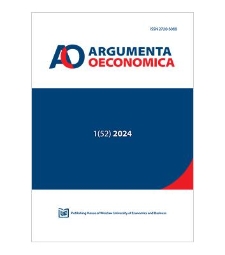Dolnośląska Biblioteka Cyfrowa udostępnia 109 393 obiektów cyfrowych
Obiekt
Tytuł: Innovation activities in the service sector across EU states: Similarities or differences?
Autor:
Opis:
Argumenta Oeconomica, 2024, Nr 1 (52), s. 221-239
Abstrakt:
Wydawca:
Publishing House of Wroclaw University of Economics and Business
Miejsce wydania:
Data wydania:
Typ zasobu:
Identyfikator zasobu:
doi:10.15611/aoe.2024.1.13 ; oai:dbc.wroc.pl:126417
Język:
Powiązania:
Argumenta Oeconomica, 2024, Nr 1 (52)
Prawa:
Pewne prawa zastrzeżone na rzecz Autorów i Wydawcy
Prawa dostępu:
Dla wszystkich zgodnie z licencją
Licencja:
CC BY-SA 4.0
Lokalizacja oryginału:
Tytuł publikacji grupowej:
Kolekcje, do których przypisany jest obiekt:
- Dolnośląska Biblioteka Cyfrowa > Uczestnicy Konsorcjum > 04. Uniwersytet Ekonomiczny we Wrocławiu > Czasopisma wydawane przez Wydawnictwo UEW > Argumenta Oeconomica
- Dolnośląska Biblioteka Cyfrowa > Zasoby > 2. Czasopisma > Czasopisma współczesne
Data ostatniej modyfikacji:
30 kwi 2024
Data dodania obiektu:
30 kwi 2024
Liczba wyświetleń treści obiektu:
160
Wszystkie dostępne wersje tego obiektu:
https://dbc.wroc.pl/publication/165351
Wyświetl opis w formacie RDF:
Wyświetl opis w formacie OAI-PMH:
| Nazwa wydania | Data |
|---|---|
| Innovation activities in the service sector across EU states: Similarities or differences? | 30 kwi 2024 |
Obiekty Podobne
Trzpiot, Grażyna
Pawlak, Karolina
Miłaszewicz, Danuta Łatuszyńska, Małgorzata Nermend, Kesra Piwowarski, Mateusz Borawski, Mariusz
Tomaszewski, Marek
























